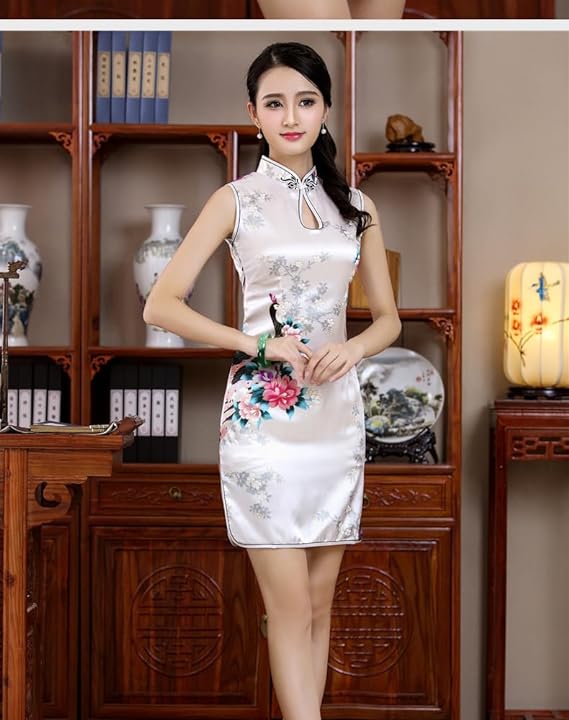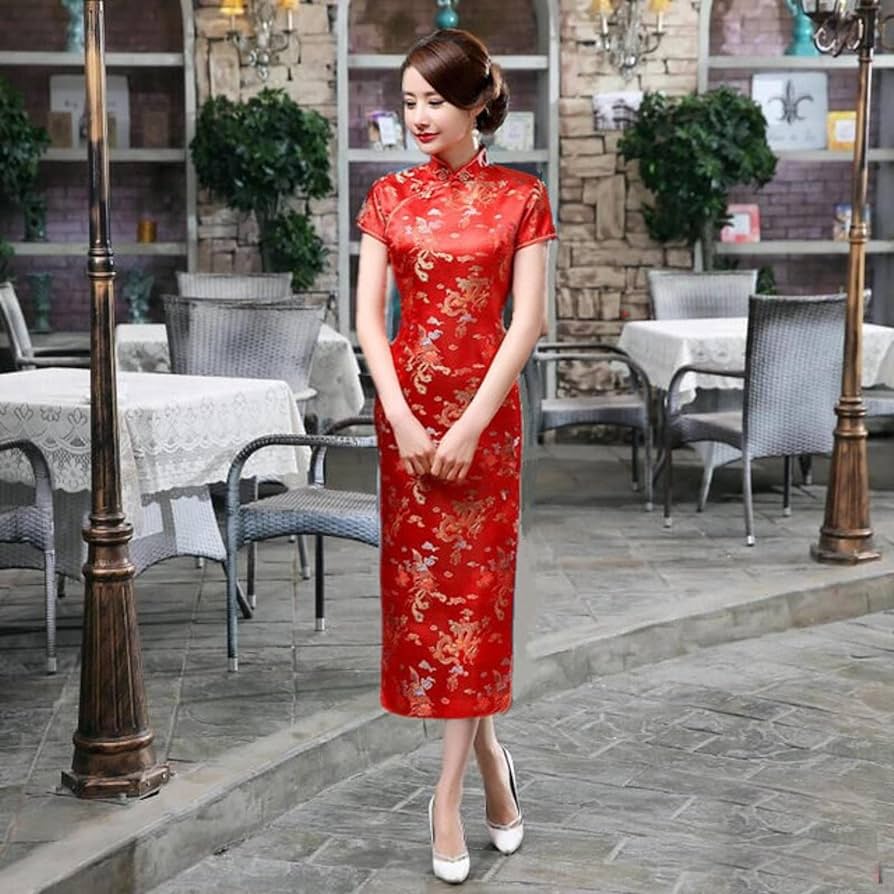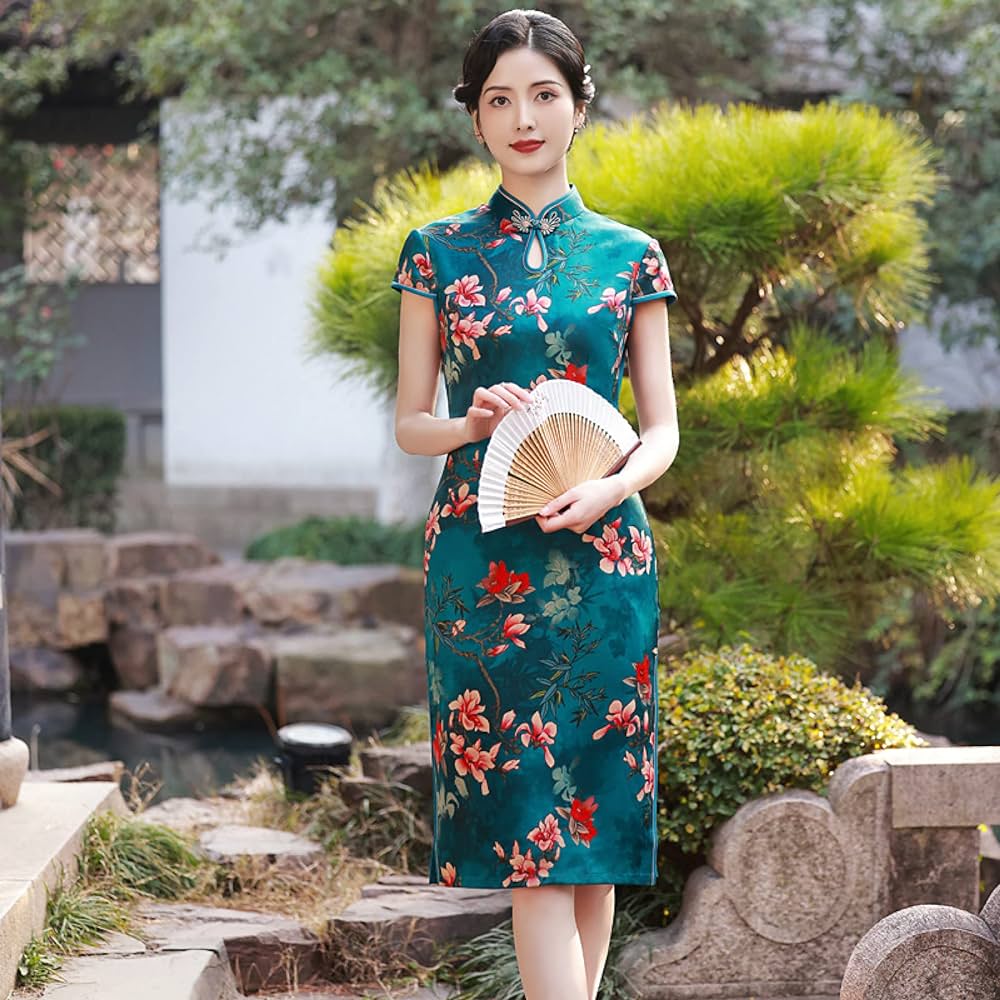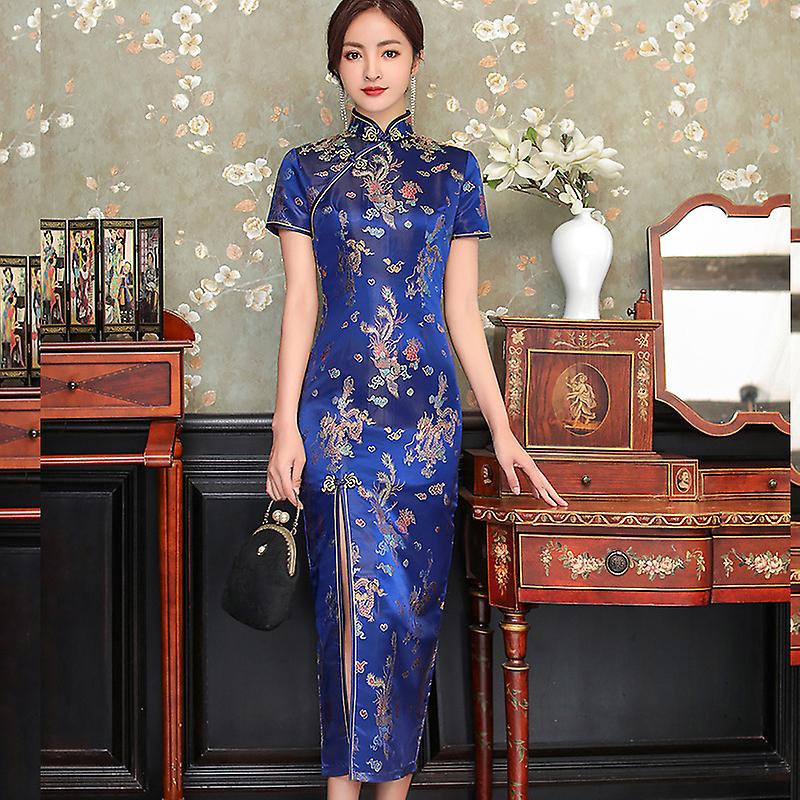The cheongsam, also known as qipao, is a traditional Chinese dress that has captivated people around the world with its timeless elegance and grace. In this article, we will delve into the world of cheongsam. From its rich historical roots to its intricate designs and cultural significance, we will explore the enduring allure and beauty of this iconic garment. Whether worn on special occasions or as a fashion statement, the cheongsam symbolizes the artistry and sophistication of Chinese culture. Join us as we take a journey through the centuries to discover the enchanting world of cheongsam.
I. A Glimpse into History: Origins and Evolution of Cheongsam
1.1 Historical Roots:
The cheongsam has a history that dates back centuries, originating from the Qing Dynasty in China. It was initially influenced by Manchu-style clothing, characterized by its loose-fitting and wide-sleeved design. Over time, the cheongsam evolved, incorporating elements from traditional Han Chinese garments, resulting in the more form-fitting and elegant style that is seen today.

1.2 Cultural Significance:
The cheongsam is not just a garment; it is a symbol of Chinese culture and tradition. Wearing the cheongsam represents a deep appreciation for the rich heritage and craftsmanship of Chinese clothing. The dress showcases the artistic skills of designers and seamstresses, with exquisite attention to detail and the use of luxurious fabrics. By donning the cheongsam, individuals embrace and celebrate their cultural identity, paying homage to the beauty and grace of Chinese aesthetics.
II. Beauty in Design: Elements and Styles of Cheongsam
2.1 Embroidery and Intricate Details:
One of the most captivating aspects of cheongsams dress is the exquisite embroidery and intricate details that adorn the dress. This meticulous craftsmanship showcases the rich traditions of Chinese culture and adds a layer of depth and beauty to the garment. Embroidery on cheongsams typically features traditional Chinese designs, such as floral motifs, intricate landscapes, or auspicious symbols.
Embroidery on cheongsams is not merely decorative; it tells a story. Each stitch and pattern carries cultural significance and symbolism, reflecting the values and beliefs of Chinese traditions. Delicate floral patterns symbolize beauty, femininity, and the abundance of nature. Auspicious symbols, such as dragons or phoenixes, convey good fortune, luck, and power. Scenes inspired by nature, like flowing rivers or graceful birds, showcase the harmony between humans and the environment.
The embroidery on cheongsams requires exceptional skill and years of training. Master embroiderers meticulously work with fine needles, carefully threading vibrant threads to create these intricate designs. Through their artistry, they breathe life into the fabric, turning a simple cheongsam into a true work of art.

2.2 Silhouette and Styles:
The form-fitting silhouette is a defining characteristic of cheongsams, accentuating the curves and grace of the wearer. The dress typically features a high collar, straight lines, and a narrow waist, creating a sleek and sophisticated appearance.
The high collar of the cheongsam elongates the neck, adding an air of elegance and refinement to the wearer. It symbolizes modesty and grace, highlighting the beauty of the face and emphasizing the wearer’s poise. The straight lines of the cheongsam create clean and flattering silhouettes that enhance the natural curves of the body. The narrow waistline further accentuates the feminine figure, creating a striking and alluring aesthetic.
Cheongsams come in various styles, representing the evolution of this iconic dress. The traditional ankle-length cheongsam exudes timeless elegance, evoking the grace and beauty of ancient China. The modern knee-length version offers a contemporary twist, making it more versatile for different occasions. In recent years, designers have also introduced contemporary adaptations that combine Western and Chinese aesthetics, resulting in fusion styles that embrace the best of both worlds. These adaptations cater to individuals seeking a more unique and personalized cheongsam experience.
III. Symbolism and Meaning: Interpretations of Cheongsam
3.1 Femininity and Elegance:
The cheongsam has long been associated with traditional femininity and grace. The dress accentuates the beauty of the female form, emphasizing elegance and sophistication. The slim silhouette, coupled with the high collar and tailored fit, creates a sense of poise and refinement. By wearing the cheongsam, women can embrace their femininity and exude confidence in a symbol of timeless beauty.
3.2 Cultural Identity and Pride:
Beyond its aesthetic appeal, the cheongsam also embodies cultural symbolism and pride. For many Chinese, wearing the cheongsam is a way to connect with their heritage and proudly showcase their cultural identity. It serves as a reminder of the centuries-old traditions and customs that have shaped Chinese culture. By wearing the cheongsam, individuals not only express their personal style but also celebrate and honor their cultural roots.

IV. The Versatility of Cheongsam: Fashion in Modern Times
4.1 Contemporary Adaptations:
While the cheongsam is deeply rooted in tradition, it has also evolved to meet modern fashion sensibilities. Designers have introduced contemporary adaptations that incorporate Western influences, resulting in cheongsams with unique cuts, fabrics, and embellishments. These adaptations allow individuals to express their personal style while honoring the timeless beauty of the cheongsam.
4.2 Global Reach:
In recent years, cheongsams have gained popularity worldwide, transcending cultural boundaries and becoming a fashionable choice for special occasions and events. The beauty and elegance of the cheongsam have captured the hearts of people from different cultures who appreciate its timeless appeal. Whether worn by Chinese or non-Chinese individuals, the cheongsam serves as a testament to the universal appreciation for the artistry and allure of traditional Chinese fashion.

V. Preserving Tradition: Ensuring the Legacy of Cheongsam
5.1 Handcrafted Excellence:
The art of creating cheongsams involves meticulous craftsmanship and attention to detail. Master seamstresses spend countless hours handcrafting each dress, ensuring exquisite fit, intricate embroidery, and high-quality finishes. By preserving traditional methods and supporting these artisans, we ensure the legacy of cheongsam craftsmanship for future generations to appreciate and admire.
5.2 Cultural Revival:
In recent years, there has been a renewed interest in traditional Chinese clothing, including the cheongsam. This cultural revival has led to a resurgence in the popularity of the dress, as younger generations embrace and celebrate their cultural heritage. The cheongsam has become a symbol of cultural pride and serves as a reminder of the richness and beauty of Chinese traditions.

Embracing Elegance and Tradition with Cheongsam
In conclusion, the cheongsam stands as an embodiment of elegance and tradition, with a rich history that spans centuries. Its intricate designs, sophisticated styles, and cultural symbolism have captivated people around the world. Wearing the cheongsam is not just about donning a beautiful dress; it is an expression of cultural pride and appreciation for the artistry that is woven into each garment. In today’s globalized world, the cheongsam continues to evolve, adapting to modern fashion sensibilities while preserving its timeless beauty. By embracing the cheongsam, individuals embrace the rich heritage and elegance of Chinese culture, creating a bridge between the past and the present.
